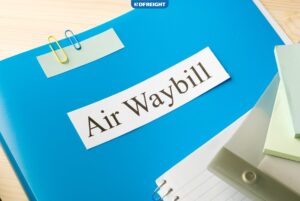What Are the Different Types of Freight Charges?
Knowledge of the necessary paperwork and types of freight charges is required for successful shipping. This expertise will save your company a lot of time and confusion. But before we go through the different freight charge types, let’s look at two of them in more detail. The terms Bill of Lading (BOL) and Freight Bill are frequently misunderstood but differ. It is best to distinguish the two to avoid any future complications.
Table of Contents
What’s a BOL or Bill of Lading?
The Bill of Lading is important since it is required to transport freight. It serves as a receipt for freight services, a contract between the carrier and the shipper, and a title document, and it is issued by the shipping firm or the 3PL company. The BOL gives drivers and carriers the information they need to complete a freight cargo, such as the weight, value, and description of each shipped item.
Bills of Lading can be used in a court of law to assess if a corporation met its promises since they are legally binding documents. Customers and freight firms must thus guarantee that the information in the BOL is correct. You can avoid any probable problems by taking the time to examine and re-check your Bills of Lading properly.
BOLs are agreements between the shipper and the provider/carrier that specify the freight’s collection location, destination, and estimated arrival time.
What’s a Freight Bill?
Before going through the different types of freight charges, you should find out more about freight bills. A Freight Bill is usually confused with a Bill of Lading. However, unlike a BOL, a freight bill cannot be used as evidence in a court of law in case of a legal dispute. Instead, when inspecting shipping methods and examining records, a Freight Bill, also known as a Freight Invoice, comes in handy.
Freight Bills should resemble their Bills of Lading counterparts in appearance, but they can also include extra charges or information to explain information on the BOL. Instead of using the original BOL, freight bills function well as an auditing document when developing logistics processes.
A List of 10 Different Types of Freight Charges
Let’s look at the various forms of freight charges essential for efficient and successful freight shipping.
- Consignee Collects
The consignee is a buyer responsible for all freight expenses during delivery. Consignees are also in charge of filing any taxes or paperwork and customs declarations (a statement showing what items are being imported).
- Free on Board (FOB) Origin
Free On Board (FOB) Origin is the third member in this list of different types of freight charges. It refers to a situation where the buyer/supplier covers all transportation costs, including insurance, from the site of manufacture to a predetermined location, after which the buyer is responsible.
Even if no FOB terms were negotiated or indicated in the contract or purchase order, the buyer is responsible for freight and damaged products when the contract or purchase order is FOB Origin.
- Free on Board (FOB) Destination
After the title to the goods goes through the consignee’s dock, the shipper pays all freight charges. As a result, all freight is prepaid before shipment.
- Third Party
A logistics organization that pays freight charges on behalf of a shipper or consignee is called a Third Party. A third party might be incredibly helpful when the freight order is intricate, or the consignee lacks experience.
- Prepay and Add
Because the shipper pays for the freight and subsequently collects the costs from the customer, this form of fee favors the customer. But remember! This is only because the shipper and the client have a nice relationship, and the shipper can negotiate better terms and get good deals rather than the customer.
- Cash on Delivery
Cash on Delivery is another one of the ten different types of freight charges. When the delivery, the carrier collects freight charges and presents them to the shipper for reimbursement. There is an additional charge for this sort of carrier charge.
- FOB Origin & Freight Prepaid
This charge is similar to FOB Origin in that the freight’s responsibility is passed to the consignee, but the shipper pays all the cargo expenses.
- FOB Origin, Freight Prepaid, and Charged Back
The consignee is responsible for the freight, while the shipper is responsible for paying the freight bill. However, the shipper sends the consignee an invoice for all freight expenses.
- FOB Destination & Freight Collect
The title of the goods goes to the consignee as part of FOB Destination; however, they must pay all fees.
- FOB Destination, Freight Collect & Allowed
The last of the ten different types of freight charges is FOB Destination, Freight Collect & Allowed.
At their dock, the consignee receives title to the goods, pays the freight costs, and then deducts the freight charges from the seller’s invoice for the items.
The Final Word
Recognizing these different freight charges will help you succeed, save you a lot of time, and prevent frustration. Then, pay close attention to them and remember that you can contact us whenever you need help with your freight charges.
How are freight charges calculated?
Freight charges are calculated according to the mode of transport, the distance traveled, the weight or volume of the shipment, and the value of the goods.
How can I reduce my freight charges?
There are several ways to reduce freight charges, including consolidating shipments, using a less expensive mode of transport, or negotiating discounts with carriers.
How are freight charges billed?
The carrier typically bills freight charges to the contracted party to transport the goods.
What is the difference between class and density?
Class is a measure of the value of the goods being shipped, while density is a measure of the weight or volume of the shipment.
What is a W&D fee?
A W&D fee (weight and dimensional) is a type of charge assessed for shipments that are heavier or larger than usual.
What types of fees are typically associated with air cargo?
Air cargo fees typically include packaging and handling fees, fuel surcharges, insurance fees, customs clearance fees, and taxes.














